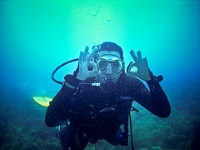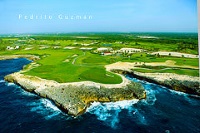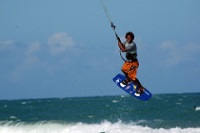
The island's famed offshore region, Silver Bank, welcomes humpback whales from December to April, when the giant mammals visit to calve. Divers will enjoy the location, as well as other wonderful sites off the destination's coast. Indeed, each region has its signature dives, where adventurers will encounter vibrant, fishy reefs and light-beam-filled caves. The island's brag-worthy list of natural and artificial wrecks will also interest divers. Some date back to the 16th century, courtesy of the first European to ever set foot in the Americas. Others come from the modern era. All in all, warm water and generally good visibility make the Dominican Republic a year-round destination for divers of every level.

The Dominican Republic is a golfer's Treasure Island. The country has been a destination among golfers ever since the Teeth of the Dog course opened in 1971. Its re-discovery, in terms of new courses, golf resorts and community development, has only occurred in the last few years. The Punta Cana Resort has one of the island's most famous courses, given that local legend Pete Dye and golfing legend Jack Nicklaus designed it. A host of equally luxurious resorts have courses developed by names such as golfing champion, Nick Faldo, and golf-course architect, Robert Trent Jones, and have ocean-view holes and tropical foliage-lined fairways. Summer months can get too hot for midday tee-offs but resorts give discounts to the hardy souls who make the effort.

Cabarete is ranked as one of the top ten windsurfing destinations in the world, and Cabarete Bay is the capital of windsurfing in the Caribbean. The conditions are also fantastic for kitesurfing or kiteboarding, and international competitions for both sports are held here every year. Kite Beach is considered to be the best place in the world for kitesurfing.Consistent easterly trade winds blow across the bay all year round, and are light in the morning to suit beginners, while stronger winds whip up the waves for more experienced wind and kite-surfers in the afternoons. The reef surrounding the bay provides protected and flatter waters within the bay, as well as wavy conditions for wave jumping on and outside of it. In winter the winds tend to be lighter, but waves are at their biggest, while summer provides flatter conditions and stronger winds. Numerous wind and kite-surfing schools and centres offer lessons, as well as equipment for rent.

Travel Guide powered by Word Travels, copyright © 2023 Globe Media Ltd. By its very nature information in this travel guide is subject to change at short notice and travellers are urged to verify information on which they're relying with the relevant authorities. Neither Globe Media Ltd nor Travel Vogue can accept any responsibility for any loss or inconvenience to any person as a result of information contained above.